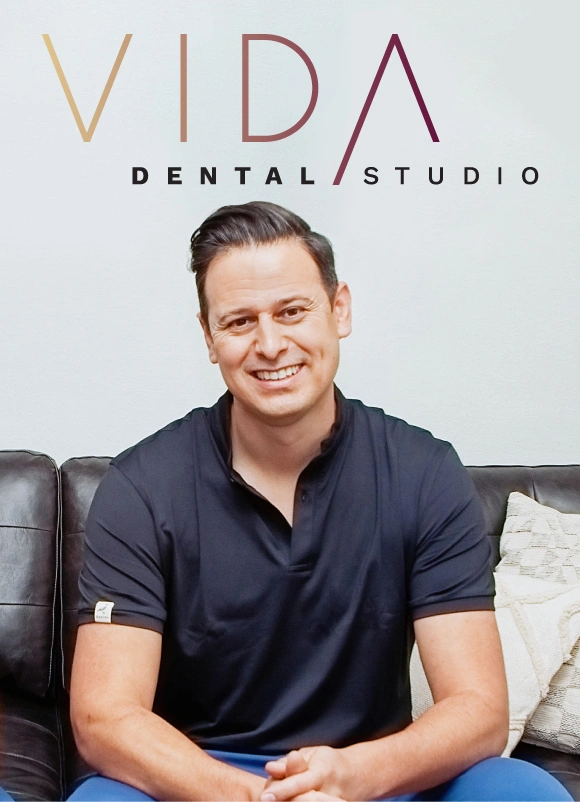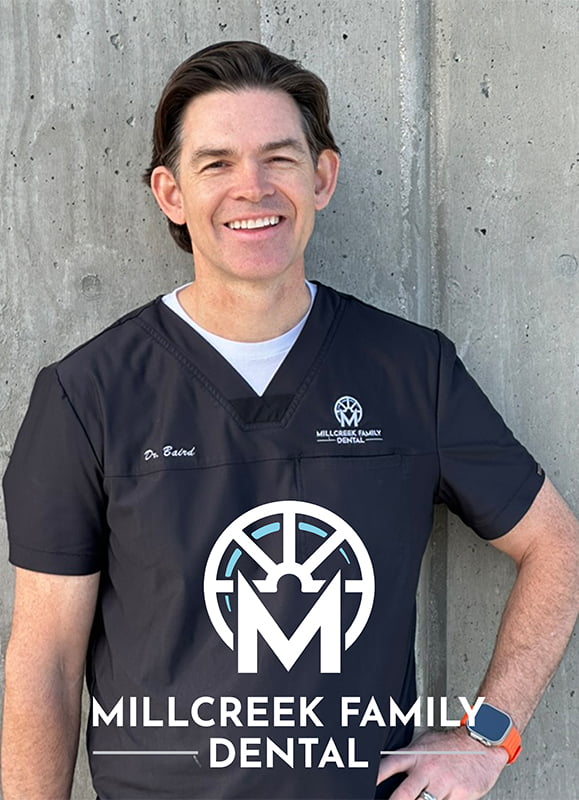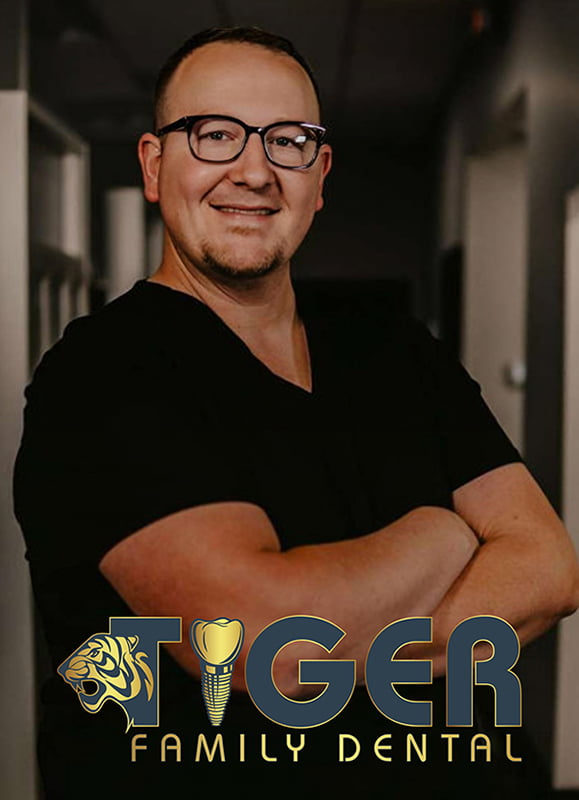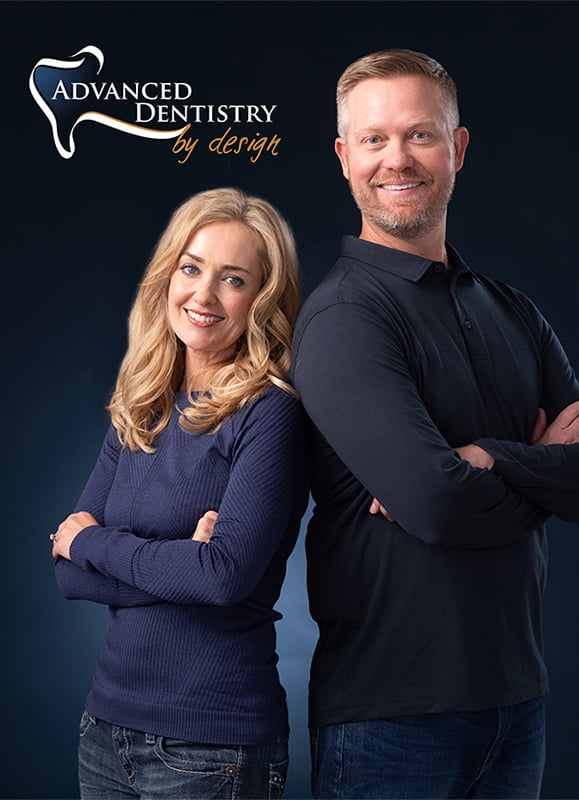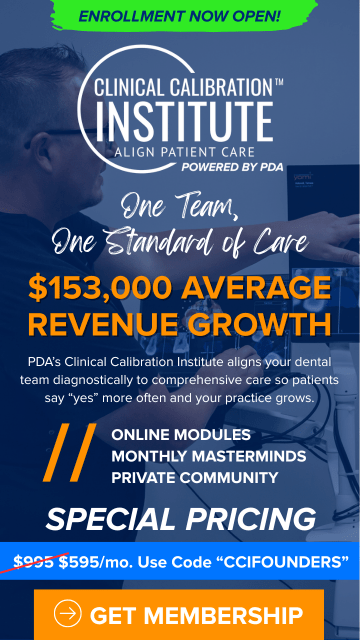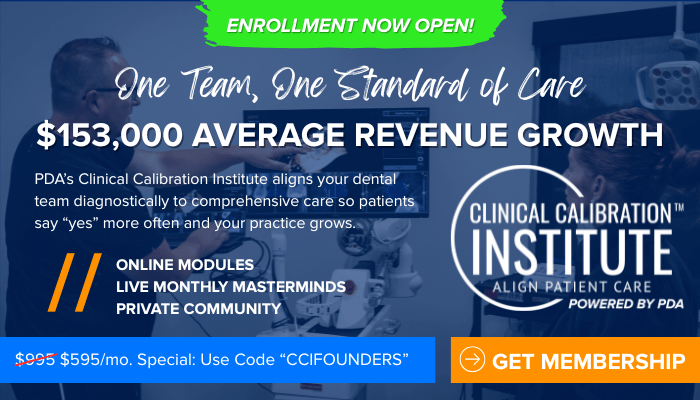Episode 249: Adapting to Constant Change
“If you accept change and learn better tactics of how to adapt to it, you have a much better shot of keeping your performance at a high and sustained level.” ~Adrienne Reynolds, Ph.D., SPHRi, SHRM-SCP
In this episode of Everyday Practices Dental Podcast, host Regan Robertson is joined by a special guest, PDA’s Chief HR Officer, Adrienne Reynolds, Ph.D., SPHRi, SHRM-SCP, for an insightful discussion on a topic that affects every dental practice owner: adapting to constant change.
Change is inevitable, but how do you and your team handle it? Are you excited by the new possibilities, or do you feel the weight of uncertainty pressing down on you? Regan and Adrienne explore this critical subject, sharing strategies that dental teams can use to not just survive change but to thrive in it.
You’ll hear about PDA’s recent half-day training session where the entire team came together to tackle the challenges of constant change head-on. Adrienne shares the importance of adaptability in maintaining high performance, even when change is stressful. Whether it’s about keeping a positive mindset, managing ambiguity, or ensuring your energy levels are up to par, Adrienne provides practical insights that can help you and your team navigate the ever-shifting landscape of a dental practice.
As you listen to this episode, we want you to think about the following questions:
- How do I typically respond to unexpected changes in my work or personal life?
- Which of the three core elements of adaptability – inner voice, ambiguity threshold, or energy supply – do I need to work on the most?
- What practical steps can I take to improve my adaptability and help my team do the same?
Episode Transcript
[00:00:00] Intro: The Productive Dentist Academy Podcast Network.
[00:00:02] Regan: Doctor, are you living the dream or just dreaming of living? It is my honor to announce the PDA 20th anniversary special conference this September 12th to the 14th in Frisco, Texas, the nation’s leading course on dental practice growth. If you feel isolated as a leader who was frustrated that your schedule is unproductive, maybe your team is disjointed or your systems are inefficient. This is the conference for you. The PDA 20th anniversary conference has all new features, including keynote speaker, Emmett Smith, who is a pro football hall of fame, running back and entrepreneur. You can choose your own educational track to customize your learning experience. Go to www.productivedentist.com and click the popup or select Productive Dentist Academy Conference under the Dental CE and Events tab. That’s www.productivedentist.com. Seating is limited. Register today and we look forward to helping you make your dreams become reality.
[00:00:54] Adrienne: If we don’t, if we are not reacting well to change, that affects our future.
[00:01:02] Regan: Welcome to the Everyday Practices Podcast. I’m Regan Robertson and my co-host, Dr. Chad Johnson and I are on a mission to share the stories of everyday dentists who generate extraordinary results using practical proven methods you can take right into your own dental practice. If you’re ready to elevate patient care and produce results that are anything but ordinary, buckle up and listen in. As a doctor who is also oftentimes a practice owner, how do you navigate change with your team and is it something that you look forward to, that you’re excited about or is it something that might be weighs a little heavy on your chest? Do you feel like sometimes there’s a lot of change going on in the practice or maybe not enough? Well, at Productive Dentist Academy, uh, we navigate change pretty much for a living. And the reality is all of us. Navigate change every single day. The one thing that is constant is change is inevitable And on our show today, I’m Regan Robertson. Welcome to Everyday Practices Dental Podcast. Dr. Chad Johnson is dentisting right now, but I have invited a special guest productive dentist academies at chief HR officer, Dr. Adrian Reynolds to discuss today adapting to change and how we are tackling that as a team here at PDA. Adrienne, welcome to the show. Thank you so much.
[00:02:23] Adrienne: What an honor it is to be here.
[00:02:25] Regan: Absolutely. So as you know, and listeners, you don’t know yet. We just completed a half day training session where we pulled every single employee from PDA together to tackle the topic, adapting to constant change and that came about because we know that it’s something that is constant for us. It’s always there and the team that really is aligned, it has a shared operating system and shared knowledge really grows together, become stronger together. We’re able to see different perspectives together. So that’s one part of why we did it. The other is because we operate on a set of key characteristics. You might know them as core values in your dental practice. So PDA’s key characteristics are knowledgeable, meaning first and foremost, we’re a learning company. Every employee at PDA should come with a great set of knowledge and always be working on improving their knowledge in their specific field of expertise. Two, relationship-driven. If you head over, if you google Productive Dentist Academy reviews, like Google reviews, read it, and you will see supportive comes out, I think vastly far and above everything else and that is because Bruce and Victoria, the co-founders are very dedicated to maintaining strong relationships with our clients, with our community, with each other, and thirdly, responsive. What does responsive mean? It can have a really big, vast definitional net, if you will, that it casts and we have a lot going on as a team. And so one of the topics that came up. Was, you know, how can we get training wrapped around to help us become more responsive or maybe appropriately responsive? So Adrienne, I know you were tasked with finding curriculum for us that you would lead and you ended up settling on adapting to constant change. Can you tell us a little bit about this course and what we just took our entire company through for half a day?
[00:04:11] Adrienne: Absolutely. So, um, you know, Reagan, as you know, we are absolutely, I’ll even say blessed that we’ve invested in some fantastic learning resources from the corn fairy company, very research based, you know, we don’t do management fads here. We look for what’s based on evidence and what actually works and we do that with ourselves and with our clients and everything else and this course on adapting to constant change recognizes. As you said, that change is inevitable and there’s sometimes a misconception that we have to embrace change. We have to be happy about change and that that’s the proper way to react to change but you know what? Most of us do not react happily to change. Even if we have good change, I mean, getting married is good change. Having a baby is good change, but change is stressful even when it’s good and so our reactions to change, it’s more about making sure that we have great adaptability, because if we don’t, if we are not reacting well to change, that affects our performance and obviously we’ve got to maintain high levels of performance for our business to grow or to make those goals of whatever it is that we’re trying to do as a business owner or as a team member. So if we have better strategies to adapt and absorb change and uncertainty, doesn’t mean you got to like it, doesn’t mean you got to embrace it, but you accept it and learn better tactics of how to adapt to it. You have a much better shot. at making sure your performance is at a high level and is sustained at a high level and doesn’t just go up and down and up and down. So that was really the biggest focus of our training.
[00:05:53] Regan: It was very methodical. I felt like it was really expertly put together because the end result was a tool, several tools that you can use yourself and it begins with definitions, you know, adaptability is as defined in this course, the ability to absorb change and uncertainty while maintaining high levels of performance. So those listening, you know, think about a time in your life where you experienced an unexpected and maybe as a leader yourself, did, did the team respond with flexibility, agility, optimism, excitedness. I would, I would venture to guess that there were varying degrees of enthusiasm and, and all the way down to, you know, reluctant contributors who didn’t really know about this, you know, worked fine before why are we having to change now? And as a leader myself, Adrienne. There’s been times in my life where I get that closed lid mentality. I almost don’t want to meet people where they’re at because I’m like, the change is happening. Get on board. I know. Let’s just do it. Like I don’t have time for this. That’s one of the old thoughts that I used to have in my head and what I discovered over time was when we are able to get around ourselves and meet people where they’re at, it’s very compassionate and the adoption rate goes. through the roof. So in this course, highly adaptable leaders that defines experience, change and uncertain differently. I underlined the word differently and was very excited and thought, okay, what are we in for Adrienne? How are we going to do this differently?
[00:07:14] Adrienne: And that’s the key is, as you just said, you know, in your mind in the past, you have thought about, “Well, I don’t have time for this. They just need to get with the program,” but you know what? Some other point in your life. Someone has said that about you about all of us, right? We all experience change differently and we’re going to have those moments where we are just pushing through and then we’re going to have those moments where, “Oh my gosh, this is taking quite a toll,” and so it is about. How to experience that change in a very different way so that we can keep pushing through and we can recognize in others when they may be having difficulties so we can help them push through as well and what it really comes down to is that there are three core elements of adaptability that we have to focus on and that we can practice getting better at and these three core elements, there’s first off our inner voice. Right. It’s that voice inside our head that when something happens, that’s annoying or negative, or it’s a bad, you know, some adverse event, maybe we’re late getting into the office because there’s bad traffic or something. How do we respond in our head? What are we saying in our head? Are we being negative about it? Are we being positive about it? Are we allowing our inner voice to stress us out, right? So that’s one core element of adaptability. The second is our ambiguity threshold, and that’s really how much uncertainty can we handle and I love using a metaphor of, you know, my favorite food is Korean. That is my favorite cuisine of all time, and I can eat it 24/7 and Korean food is known to use the gochujang pepper and can be quite spicy and oh, yeah, and it’s if you like spicy, it’s awesome but if you think about it different people have different tolerance for spiciness, right? I have gone to a korean restaurant and i’ve had to fight everybody for the kimchi because everybody wanted the spice and then i’ve gone with other friends that don’t like spicy at all and i’m like, “Great all the kimchi is for m, yeah”
[00:09:14] Regan: i’ll give you all my spicy I can handle a whiff of spice.
[00:09:20] Adrienne: Well, I will take it all and that ambiguity threshold, it’s really similar. It’s how much uncertainty can we put up with? How much can we handle before the sweat comes out of our forehead and we turn red and we’re, you know, You know, mopping up all of our perspiration and then the third core element of adaptability is our energy supply and I know that we’re starting to see more in the media about how exercise and how we take care of ourselves physically improves our mental state, but by gosh, there is so much medical research and evidence showing that the better we take care of ourselves physically, and we know that just in terms of taking care of, you know, our teeth and our mouth, right, that it produces so many benefits in the other ways. So if we have high levels of physical, mental, and emotional energy, that also allows us to be far more adaptable to change in a way that allows us to still get on with life and still perform and keep moving forward.
[00:10:24] Regan: Well, I love definitions. Definitions put context around it, and I really appreciated that there are three core elements to adaptability because it is. compartmentalizes it and one of the neat things that you took us through, Adrienne, was a self-assessment test and I was blown away with my own results because I had maybe a limiting belief on myself. I thought I would not appear to be as adaptable as it reflected. To me, and that was an aha moment where emotions to me played a really important part. I realized after taking the self-assessment, my energy supply was my lowest by the way. So how I take care of myself first, that’s putting on the oxygen mask as Christine Uhen says, before you help somebody else. That was my lowest score. My other scores were, were very high. I don’t have to be positive about it. I don’t have to be excited or optimistic or even a joyous that’s, that’s the word. It’s not necessarily optimistic, but I don’t have to be joyous about it. It’s how I’m able to react to it and that to me was a gigantic aha moment. What did you think? You took your own self-assessment, right?
[00:11:28] Adrienne: I did.
[00:11:29] Regan: Did you have any moments or did it sort of like make sense to you? Was there anything that surprised you?
[00:11:33] Adrienne: No, it, it, it kind of worked out as I expected it to. Um, my lowest actually was my energy supply as well, although I’m going to excuse myself for that because I had surgery about a month ago and so I’m not in the greatest of physical shape right now but, you know, my inner voice could have been higher, my ambiguity threshold could have been higher, but here’s the thing, we, all of us, we’re all human beings. The only way to get, you know, a perfect score on these is to be a robot and none of us are robots and we don’t want to work with robots, right? We’re human beings and we may be the most chill person on the planet, but there is going to be some type of change that’s going to affect us negatively and just as you said, this is not about learning to be happy about change. You don’t have to be happy about it. Most of us are not happy about change that is imposed on us. We’re happier about change that we plan for, but in work, most of the time we’re not planning for that change. We get nice and comfortable and get all settled into our roles and our routines and then boom, something changes and all of a sudden we have to pivot, like we did during our activity and it’s those unexpected moments, it’s how do we reduce the anxiety. It’s not about becoming happy, happy, joy, joy, but it’s about being able to still push through and persevere and still have high levels of performance, even when dealing with that ambiguity and that uncertainty.
[00:12:58] Regan: I want to talk a minute for this interactive exercise that you took us through. So in the entire company got split into three different groups. So we had a fictitious project. So we were creating a fictitious product and you had a marketing department that was creating the packaging and the logo and all of that. You had a distribution center that was going to figure out where it goes and you had like a design committee, I think as well. We were broken into these little teams, which was really nice, you get to meet your team and you were given 30 minutes of time and I was on the distribution team and before I knew it, we were being called back. So this is all virtual. So you got into these little breakout rooms and then you’re all called back together and I was like, well, this hasn’t been 30 minutes. So it’s surprisingly, everyone was confused and Adrienne, you said, “Surprise, these things have changed. So legal came in. You can’t use this name, and, uh, legal also says you can’t, you can’t go in this particular route for distribution. So can’t use this imagery. So go back now and revamp yourself.” So we had to change directions a little bit and I realized something in that first and second, cause we did a couple of changes and swapped team members out. So you really did a great job creating a little bit of chaos and change. What I noticed is my inner voice and this was another aha moment for me that I do lean on constantly. I always think after a change happens, okay, I tell myself whatever’s coming is going to be better and I realized that is probably something inherent to me. I have done that. Yeah. Always. I just came back from vacation. We flew nine hours, took commuting, you know, cars and everything. I took my daughter and my sister. I was really excited about taking them on this trip. We get to the hotel. I’d chosen a very fancy hotel and they greet me with a smile and let me know immediately after all this travel, “You have no water in your room. We don’t have any estimation of when water’s going to come back to your room,” and at first I was disappointed, really, really wanted to be at the specific hotel. And then they delighted me. They said, “You know, we’re taking you to a sister hotel. It’s actually a star higher than the one you’re at. You’re getting. Upgraded for free to an executive suite. We’ve got a taxi set up for you. Everything is taken care of,” and that set the tone for my two weeks on vacation. Every hiccup that happened, I kept thinking my inner voice was strong. It kept saying, okay, this is a change. It is unexpected. Perhaps it will be better than what I anticipated and even, even down to a tour that I booked, they had a change for the tour. I had to change the time first. Then I found out I couldn’t go into a bunch of the places. They were closed that day and everything ended up being better. So I loved the core elements and being able to specifically point to which part is strong in me and then which part is more vulnerable. So for another example, because we can’t always be in that high, healthy, well-rested mentality. You know, I’d had a lot of change in one day and it did get to be too much. I felt like my ambiguity threshold. So how much change I could handle in the moment was a lot and then that gave me a really powerful example to pull from because I had, you know, my sister, my daughter with me, we had a friend with us as well, and there was support around us and we were able to navigate change. So you’re not always alone and I think about that on dental teams, quite a bit, you’re not alone. You might be an individual contributor. You might be a hygienist and you might be the only hygienist in the practice, but still, even with that singular role that you have, you’re not alone in navigating change. So I thought it was really a fantastic example to take us through an interactive exercise. Let’s talk, Adrienne, about some practices to improve each of these particular buckets. Can you walk us through like, let’s start with the inner voice.
[00:16:28] Adrienne: Yeah, absolutely. The inner voice. This one I love because we actually have a wonderful acronym to use to help us remember these practices. So there’s four practices that you can do to improve your inner voice. One is to use control. You know, what control do I have over this situation? When you think about your reaction to it. Second, take ownership. How can you take ownership over this change and make things for the better? Three, examining the scope, right? So what is the actual scope of impact on me? How badly is this change going to impact me? Or, Regan, as you said, is this actually going to be a better thing, a better outcome than what I was originally expecting? Okay and then the fourth practice to improve your inner voice is to manage the time span, right? You know, to really understand, “Okay, we’re changing, but how much time is it really going to take to change? How much time am I going to have to invest into this? Is it something that, you know, is going to drag on and on and on, or is it just happening for the next 10 or 15 minutes? And then everything has changed or everything is different, right?” So this acronym of C O. S. T. From control, ownership, scope and time span is cost, and so it’s really a great way to kind of put all those together and say, what is the cost? What is the cost to me in how my inner voice speaks and if we can turn our inner voice from being negative and anxious and concerned, but being more realistically positive, not joyful, not happy, but realistically positive, then we can better handle what that change is coming. So those are the four practices for improving that inner voice that we have in terms of improving your energy supply. You know, it does certainly mean being healthy, but more than that, it’s also having or creating meaning for yourself and feeling that what you were doing or that this change has a positive impact or an impact for the better, right, and finding that meaning in that purpose in what it is that you’re doing and a key area that a lot of people skip is crafting time for yourself to self reflect, to renew, and to recover, to replenish your energy stores. A lot of people say, “Man, I never get enough sleep.” It’s really important to carve out that time to get as much sleep as you need so that your body can renew and recover from everything that’s going on in the past day. Those three practices greatly help to improve our energy supply and then on raising our ambiguity threshold, there’s five practices. One of the best ones is anticipate the future. How often, doctors, do you sit down with your teams and think about what could possibly happen next month, next year, or next quarter, or you’re planning to bring in something really cool like a Yomi robot and that sounds really awesome, what are the potential awesomeness parts? What are the potential pitfalls? How often do you sit with your team to anticipate the future? Because the more that you can brainstorm and think about the future, you’re reducing that uncertainty because you’ve already thought about it. Maybe it’s the most improbable thing in the world. I mean, you may say, “Okay, the Yomi robot, it’s gonna take a life of its own and start talking back to us,” and that sounds really, really impossible, but you know what? With the advances in AI and new software, you know what, one day you may wake up and that yummy robot is talking back to you because it’s got a new software update, right? So anticipating the future, that helps you better to accept uncertainty. Being more flexible. Thinking, trying not to be just rigid in one way and you know, what’s really important? Be tenacious. Don’t allow yourself to give up easily. Keep pushing back and pushing forward and stay aware, stay curious, learn more, keep focusing on learning more about your environment and the different aspects that could affect your practice, that could affect your teams so that as you anticipate the future, you’ve got a more well-rounded perspective on what could happen and if we are better prepared for what could happen, we have a better shot at staying really productive with high performance as we navigate that change.
[00:20:56] Regan: Each of these buckets, I’ll tell you the inner voice one in particular, my big walk away from the day was I can actually use these for the cost acronym. I can use that to create some space so that I am not reactive. So being responsive, tying back to our third key characteristic as a company does not mean being reactive and I have caught myself in the past, a decision is made or a change comes down the pipe and I immediately go into an emotional response. We know that’s the amygdala hijack, the blood drains from the front of your brain. It goes into the lizard piece and I really get frustrated with myself when I react, if I can’t create that Zen moment, and I felt that these four tips, so using control ownership, scope, and time span, let’s in an artificial pumping of the brakes. It allows me space to be able to be responsive, but not reactive and I am printing out from our curriculum, you know, had good questions to ask around the acronym and I’m going to put that up on my monitor and have that there at all times, because things will change will happen. Things will get heated from time to time. How can I maintain a very Zen quality and be the leader that my team the company deserves. That to me is that one of the best gifts that I can give as a leader. So that was a fantastic takeaway as well. And exercising curiosity, I’m not talking politics here. I won’t go down that route. However, I’ll tell you this. I decided what would happen and this is just highly curious, what would happen if I pretended like this whole political landscape was new to me? I was brand new to it and I took personal and joking off the table entirely and just started researching like an investigator and looked at candidates and looked at policy and was like, “Okay, what decisions have they made? Let’s go historically and learn about these people and see what choices they made,” and I am going to be delighted to see what I actually end up believing in or discovering or learning about these candidates and it’s a different approach that I have never used. Before in the past, I think I’ve been guilty of soundbites off and on and sort of, you know, hitching my saddle to entertainment value versus the data elements of it. So data and emotion always work together to make that decision and you need both equally. So I think it’s a good way to exercise curiosity and Skip Miller was one of my fantastic mentors for my life. If you look up M3 learning, you’ll see he has many bestselling books and in one of the books, he talks about taking a different route to work or a different route to school, or just a different route when you’re walking or jogging and he, and what he’s saying is, “Create new neural pathways. Invite the opportunity to create new neural pathways because you will learn more, you will grow, you will expand,” and that’s what I see with ambiguity threshold. So these, these five tips really help you prepare so that you can expand your bandwidth, but also create some of those. new neural pathways as well.
[00:23:45] Adrienne: Absolutely and you know, if you think about it, the way that we discuss our key characteristics at work, we have put them in order knowledgeable first, because if we start with responsive, then it just becomes reactive, right? We have to have the knowledge and we have to have the relationship building for us to be properly responsive and so talking about using those four questions and the acronym of cost to kind of give you a chance to pump the brakes and not be reactive, that’s giving you a chance to think more about the knowledge that you have, right? It’s a self-reflective, uh, almost a mindfulness exercise and by doing so by pumping those breaks and asking those questions, it doesn’t take very long, but it also puts you in a better frame to be in that relationship and to not just react to an emotion, but to take that wider viewpoint and so we always say that’s what we put our key characteristics in that order and this is such a great tool. It just goes back not only to responsiveness, but it helps us with our other two as well and it reminds us we are not alone. We are not alone in having an inner voice in having an energy supply. Or in having an ambiguity threshold. This is something that we all, every single human has. So even if you are that one hygienist or one associate or one doctor owner, or one office manager, you’re not alone in the change that’s happening in the practice. You are all working to sustain your performance during times of change that you may just absolutely hate, but it has to be done.
[00:25:29] Regan: So Adrienne, from your professor’s mindset, what outcomes do you anticipate from investing in our team and taking this half-day together and learning this?
[00:25:38] Adrienne: Thank you. I love those kinds of questions. So first off, one of the key components to us being successful, to finding meaning in our life and to being a great teammate is as I believe it was Plato who said, “Know thyself.” It’s so important for us to really be able to sit down and self reflect and really understand what makes us tick inside and how we react to things without shame and it’s not about. putting labels or anything, but it’s just understanding how do I operate as a human being? Because the greater self awareness that we have and finding areas, okay, I want to improve this about myself and working on that, that impacts then everybody else that’s inside our ecosystem or inside our environment and so that also helps me to build up our empathy, our emotional intelligence. It makes us a better leader. It makes us a better team member to others and it just really kind of makes us a better human being, which is kind of what we’re all trying to do at the end of the day, I think.
[00:26:38] Regan: Well, thank you, Adrienne, for taking time out of your day and discussing this really exciting topic. It’s a topic that no matter what industry you’re in, you’re always going to be faced with it. Listeners, if you’ve enjoyed hearing Dr. Adrienne Reynolds, you can also see her live. At our PDA 20th anniversary conference, that’s coming up September 12th to the 14th, uh, in Frisco, Texas. You can head on over to productivedentist.com to check it out. I think we have a few seats left and, uh, be sure to sign up you and your team. It’s going to be a phenomenal time. Thank you, Adrienne, for being with us on Everyday Practices.
[00:26:12] Adrienne: Thank you so much. What a pleasure.
[00:26:14] Regan: Until next time. Thank you for listening to another episode of Everyday Practices Podcast. Chad and I are here every week thanks to our community of listeners just like you, and we’d love your help. It would mean the world if you can help spread the word by sharing this episode with a fellow dentist and leave us a review on iTunes or Spotify. Do you have an extraordinary story you’d like to share or feedback on how we can make this podcast even more awesome? Drop us an email at podcast@productivedentist.com and don’t forget to check out our other podcasts from Productive Dentist Academy at productivedentist.com/podcasts. See you next week.
Have a great experience with PDA recently?
Download PDA Doctor Case Studies

